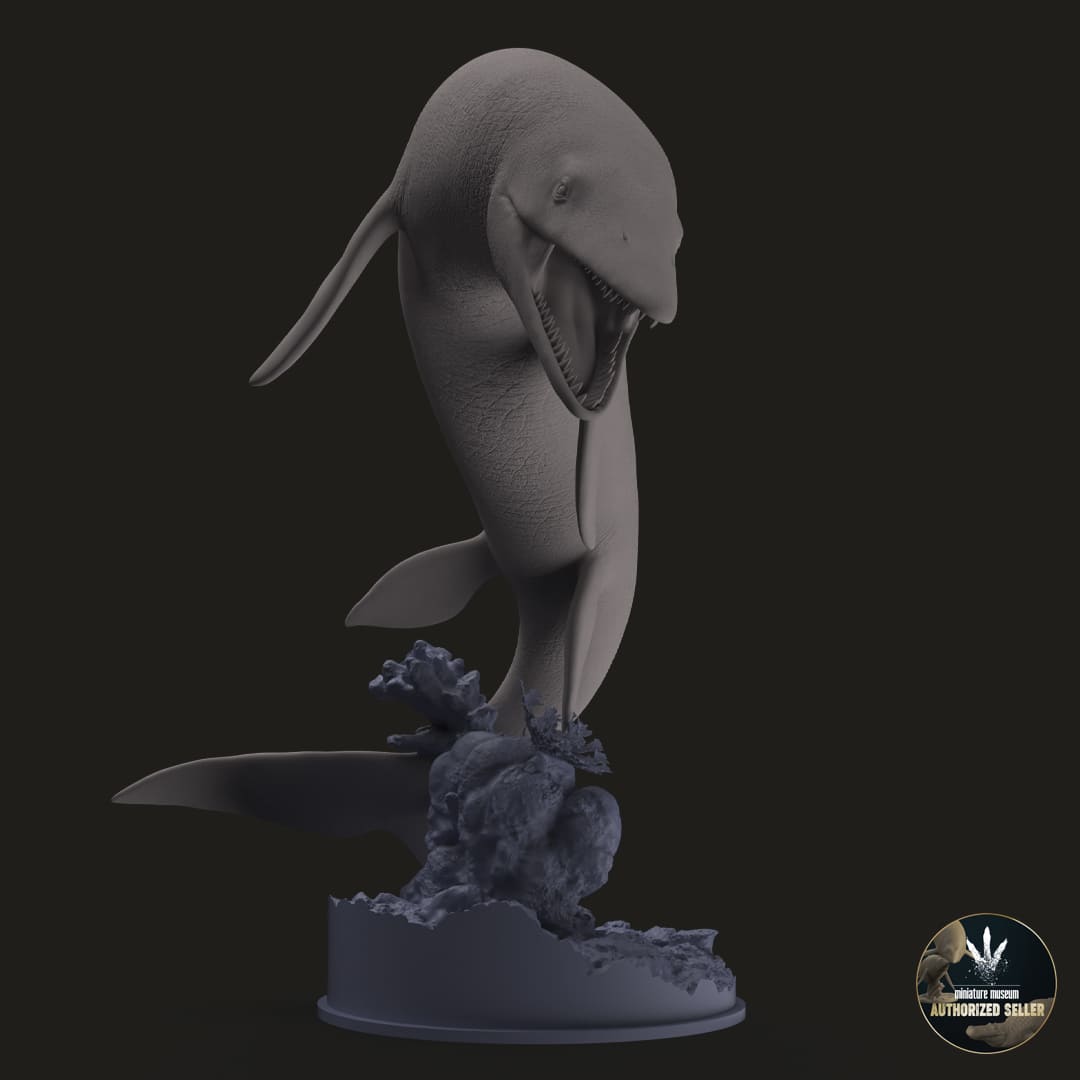




Thalassotitan atrox
Do you want another scale?
Contact us and we will make it possible!
How will you receive your replica?
In the unprimed and primed variants, you will receive the complete replicas except for the large models, where you will receive an assembly kit.
In the hand-painted variant, the replicas will be delivered complete.
How does the painting service work?
We created a private chat for you where you will have direct communication with our painter , being able to choose your preferred color schemes and follow the hand painting process closely.
Pairs well with

Thalassotitan atrox
If you have any questions, you are always welcome to contact us. We'll get back to you as soon as possible, within 24 hours on weekdays.
Shipping Information
Visit our shipping policy page to find all the information.
Customer Support
Give us a few details and we’ll offer the best solution. Connect by chat or email.
We are available 24/7.
FAQ’s
Visit our FAQ's page to find answers to common questions.
Contact Us
We'd love to hear from you. We are here to help. Visit our contact page to send us a message.
Product details
This genus clearly demonstrates that mosasaurs evolved to occupy the dominant predator niche in Late Cretaceous oceans, which is now occupied by sharks and killer whales. Severe wear on its teeth and fossils found in the vicinity of the holotype, eroded by partial digestion, suggest that this mosasaur fed on smaller species of mosasaurs, plesiosaurs, large predatory fish and sea turtles.
The genus name Thalassotitan is a portmanteau of the Ancient Greek θάλασσα (thalassa, "sea") and τιτάν (titan, "giant"), referring to the large size of the mosasaur. The specific epithet atrox is a Latin word meaning "cruel" or "merciless", which refers to the species' trophic position as a top predator and the frequency of intraspecific bite marks in fossils.
Thalassotitan was one of the largest mosasaurs. Its skull measured up to 1.3 meters in length, corresponding to a total length of 9-10 meters.
The skull of Thalassotitan is blunt and robust. The premaxilla, the bone that bears the tip of the skull, is very short in lateral view but wide and convex when viewed dorsally. The body of the premaxilla contains numerous pits called neurovascular foramina, which are believed to house tactile nerves that are highly sensitive to touch. The jugal bone, located just below the eye, is broad and robust. The frontal is short and wide, with large neurovascular foramina in the center. The supratemporal fenestrae, large openings between the eyes and the back of the skull, occupy almost a quarter of the total length of the skull and are somewhat triangular.
Thalassotitan's teeth are approximately conical, slightly curved, large and robust. They are most similar to the teeth of P. saturator except for being slightly shorter and more robust. Dental crowns are generally smooth but can sometimes have weak ridges. The cutting edges are well developed and finely serrated.
The description of the postcranial skeleton is not completely known, only fossils have been found that represent a little more than half of the anterior body. The general shape of the vertebrae is typical of mosasaurines. They are procellous, meaning the front side is deeply concave and the back side is convex.
Approximate measurements of Thalassotitan:
- Scale 1:60 - Complete
- Length 73mm
- Height 58mm
- Width 43mm
- Snout-tail length 146 mm
- Scale 1:35 - Complete
- Length 126mm
- Height 98mm
- Width 73mm
- Snout-tail length 250 mm
Information about aftershocks
Collector's item ; Hyper-realistic replica, highly detailed and with a high degree of scientific precision.
Made to scale, prototyped in resin and with a scenic base in most of the models offered. If you like miniatures, both for collecting and for painting, we offer you a wide variety of scale replicas; All of them related to dinosaurs, extinct prehistoric fauna and current fauna.
So if you love dinosaurs and animals as much as we do, this is your favorite store to collect and paint them :)
We are authorized distributors of all the replicas and figures we offer. We use 3D printers with 8K - 14K resolution, and high-quality resins with additives to improve hardness and flexibility, thus offering replicas of impeccable quality.
Different scales will be used to make the replicas (depending on the size of the species), although we are open to making other suggested scales upon request as long as they fit in our printing trays, for which you will have to contact us via email and request the required size.
Replicas are supplied with the option of airbrush priming in dark grey. If you require another colour, please let us know which one you prefer in the box with special instructions for the seller. Without priming, we do not guarantee that the resin will accept paint.
We also offer the option of choosing a professionally painted replica, which is agreed upon throughout its development with the painter, through a private chat available.
Complete replica (one piece): We supply complete replicas in those models that are small, and models that are medium, large or not very bulky, will have the prerogative of being presented as a complete replica or assembly kit as the case may be.
Complete replicas will be supplied separately from their base.
Replica assembly kit: We supply replicas whose models are large, very large or bulky, only with this option.
The indicated replicas (generally composed of base, head, body and tail) will come prepared for the subsequent assembly that will be required by the client, by sanding, putty, adhesive or technique chosen by the client.
All replicas are thoroughly inspected before shipping and will be carefully packaged to prevent damage during transport.
Information about the models
The poses of the models aim to represent each character in the most scientifically viable way, thus revealing the life and customs of prehistoric and modern fauna.
Each character has its own personality and develops in different life scenarios; birth, adolescence and play, hunting, feeding, fighting, courtship, death and many other scenes from their daily life, always from the creative perspective of their designers.
Handmade
All orders are individually prepared on the cutter for subsequent prototyping, obtaining a resin part that will require post-processing by manual and ultrasonic cleaning, support removal, ultraviolet curing, labeling and packaging.

We are authorized distributors
We offer both our own physical replicas and those that have been modeled by many of the best 3D designers, in order to offer you the greatest possible variety.
Frequently Asked Questions
If you have any questions about products, orders or shipping, please read our FAQ page to learn more.
